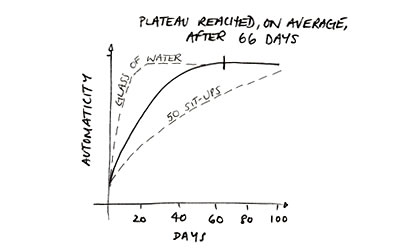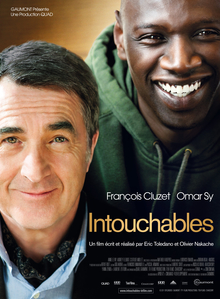
People are always smiling, especially in groups, but it doesn't just
signal that they're happy, far from it. We use smiles for specific
social purposes because they can send out all sorts of signals that can
be useful for us.
1. Get others to trust you
In a world where everyone is out for themselves, who should we trust?
One signal that suggests we are trustworthy is a smile. Genuine smiles
send a message that other people can trust and cooperate with us. People
who smile are rated higher in both generosity and extraversion and
when people share with each other they tend to display genuine smiles (
Mehu et al., 2007).
Economists even consider that smiles have a value. In one study by
Scharlemann et al. (2001)
participants were more likely to trust another person if they were
smiling. This study found that a smile increased people's willingness to
trust by about 10%.
2. Smile for leniency
When people do bad things they often smile when they are caught. Is this to their benefit?
According to a study conducted by
LaFrance and Hecht (1995),
it can be. We treat people who've broken the rules with more leniency
if they smile afterwards. It doesn't matter whether it's a false smile, a
miserable smile or a real felt smile, they all work to make us want to
give the transgressor a break.
This seems to work because we find people who smile after breaking the rules more trustworthy than those who don't.
 3. Recover from social slip-ups
3. Recover from social slip-ups
Did you forget to buy your partner an anniversary present? Has an
important client's name slipped your mind? Have you accidentally kicked a
small child? If you've tripped on a social banana, embarrassment is
your go-to emotion.
The function of embarrassment is to get us out of tight social spots (
Keltner & Buswell, 1997).
The embarrassed smiles we display involve looking down and sometimes we
emit a silly little laugh. This is designed to elicit fellow-feeling
from other people so they think less of the slip and forgive us more
quickly.
So the embarrassed smile helps us get out of jail free(ish). Once again, the power of a smile.
4. Because otherwise I'll feel bad
Sometimes we smile both because it's polite and so that we can avoid
feeling bad afterwards. Like when someone enthuses about how they saved a
small amount of money with a coupon they found down the back of the
sofa. It hardly seems to warrant a smile but you muster one anyway
because it's polite.
In one study people were asked to remain stony-faced after hearing
someone else's good news (LaFrance, 1997). They felt bad afterwards and
thought the other person would think worse of them as a result.
So we nod and smile politely because otherwise we'll regret it
afterwards. Women, though, seem to feel this pressure to smile at the
happy news of others more than men.
 5. Laugh off the hurt
5. Laugh off the hurt
Smiling is one way to reduce the distress caused by an upsetting
situation. Psychologists call this the facial feedback hypothesis. Even
forcing a smile when we don't feel like it is enough to lift our mood
slightly (this is one example of
embodied cognition).
A word of warning: smiling at upsetting things may work but it doesn't look good to others. When
Ansfield (2007)
had participants viewing distressing videos, those who smiled felt
better afterwards than those who didn't. But people who smiled at
distressing images were judged less likeable by others.
6. Grin for insight
When we're nervous our attention tends to narrow. We stop noticing
what's going on around the edges and only see what's right in front of
us. This is true in both a literal and a metaphorical sense: when
nervous or stressed we're less likely to notice ideas that are at the
edge of our consciousness. But to gain insight into a problem, it's
often precisely these peripheral ideas we need.
Cue a smile.
Smiling makes us feel good which also increases our attentional
flexibility and our ability to think holistically. When this idea was
tested by
Johnson et al. (2010),
the results showed that participants who smiled performed better on
attentional tasks which required seeing the whole forest rather than
just the trees.
So a smile really can help give us a burst of insight.
7. Smile for sex
A woman's smile has a magical effect on men, over and above eye contact. One study examined how men approached women in a bar (
Walsh & Hewitt, 1985).
When a woman only established eye contact with a man, she was
approached 20% of the time. When the same woman added a smile, though,
she was approached 60% of the time.
When men smile at women, though, the effect is less magical. While
smiling increases women's attractiveness to men, it doesn't work so well
the other way around. Indeed there's some evidence men look more
attractive to women when displaying pride or even shame, than when they
look happy (
Tracy & Beall, 2011). Less smiling makes a man look more masculine.
8. Hide what you really think
Psychologists used to think that a genuine smile never lies. Fake
smiles involve only the mouth, while real smiles—called Duchenne smiles
by psychologists—reach up to the eyes. Recent research, though, suggests
that 80% of people can fake the crinkly eyes central to a Duchenne
smile (see
Duchenne: Key to a Genuine Smile?).
So smiles can be used to hide what we really think, but it's still
not easy to fake a real smile because they have to be timed correctly. A
key to a trustworthy smile is that it has a slow onset, i.e. it takes
about half a second to spread across the face. One piece of research has
found that in comparison to a fast onset smile (about a tenth of a
second to spread), slow onset smiles are judged more trustworthy,
authentic and even more flirtatious (see:
A Slow Smile Attracts).
 9. Smile to make money
9. Smile to make money
We've already seen that economists have calculated the value of a
smile, but can a smile make us real cash-money? Apparently the broad
smile of a waitress can:
Tidd and Lockard (1978) found smiling waitresses made more in tips (there's no study on waiters).
More generally people in service industries, like flight attendants
or those in entertainment and hospitality are effectively paid to smile
at customers. But, watch out, a constant mismatch between felt and
displayed emotion—called emotional labour by psychologists—can be
exhausting, possibly leading to job burnout.
A smile may make money, but it can also be draining.
10. Smile and (half) the world smiles with you
One of the simple social pleasures of life, which goes almost
unnoticed because it's automatic, is when you smile at someone and they
smile back.
As you'll have noticed, though, not everyone does smile back.
Hinsz and Tomhave (1991)
wanted to see what proportion of people would respond to a smile aimed
at them with their own smile. Their results suggest around 50% of people
reciprocate. In comparison almost no one responds to a frown with their
own frown.
Smile for longevity
If none of these studies can coax a smile out of you then
consider this: people who smile more may live longer. A study of
pictures taken of baseball players in 1952 suggests those smiling
outlived their non-smiling counterparts by seven years (
Abel & Kruger, 2010).





















